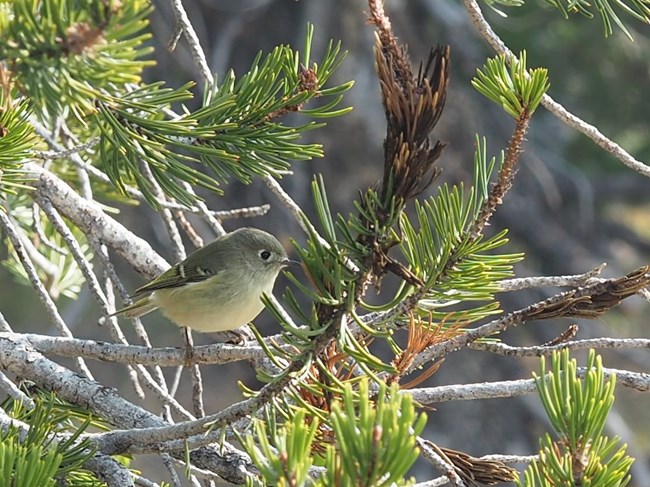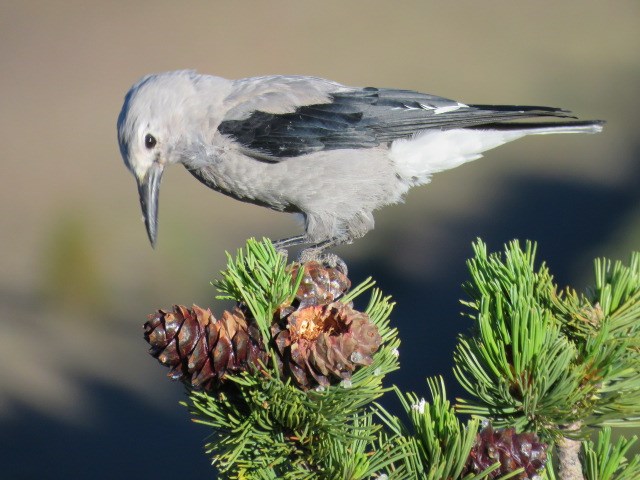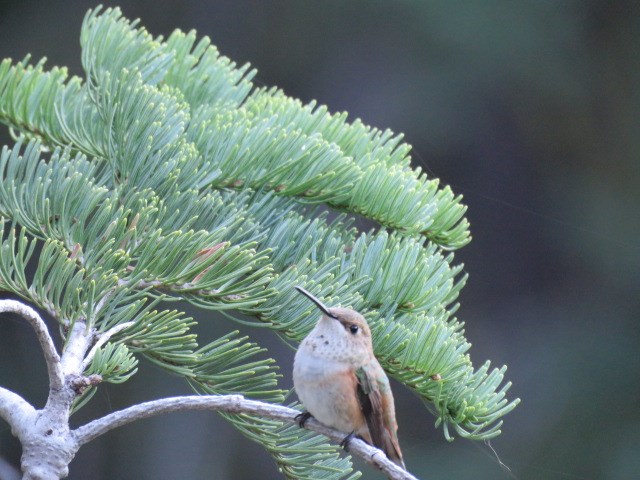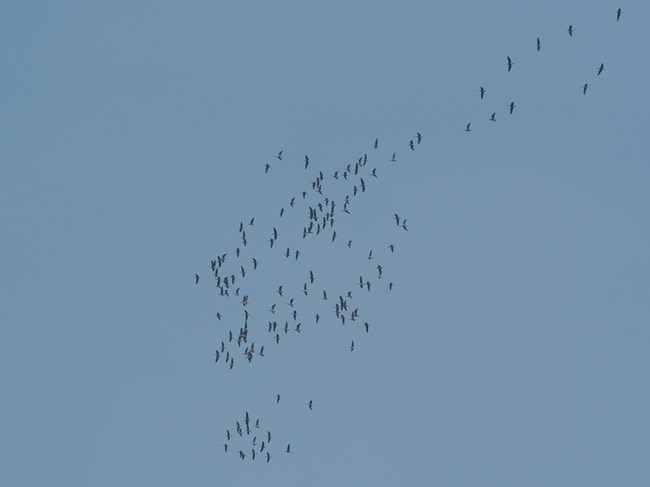
NPS Photo by Mimi Gorman 2020 Birds Are EverywhereAccording to Sean Mohren, park wildlife biologist, “Most birds occur almost anywhere." This means that many of the 250 species of birds which have occurred in the park can be observed in more than one habitat. Even so, bird watching still requires patience and a keen ear.The mountain's marbled composition of old growth forests, wet and dry meadows, numerous springs and streams, and of course, Crater Lake, supports the possibility of most species being found anywhere. In all these areas, resident and many migratory bird species are seen or heard; this includes warblers, thrushes, hummingbirds, jays, birds of prey, woodpeckers, and sparrows. 
Photo Credit Linda Powell 2021 Birding Around the RimHiking is not required to identify many common birds. Sit anywhere along the promenade in Rim Village to observe members of the Corvid family: Canada and Steller's jays, Clark’s nutcrackers, and common ravens. These are the most entertaining when fledglings float from limb to limb with quivering wings, voicing their desire to be fed. Oregon dark-eyed juncos are gregarious, small ground feeders easily recognized by their pink beaks and dark hoods. All of these are important species to this elevation.Stop at any of the overlooks along Rim Drive for opportunities to see the colorful western tanager, ruby crowned kinglet, yellow-rumped warbler, mountain chickadee, or hermit thrush. To locate these birds, a bit more patience and perhaps binoculars are required. 
Photo credit Linda Powell 2021 Preferred LandscapesAmerican dippers favor fast flowing water and are seen from trails that follow creeks, rivers, and waterfalls. Gray-crowned rosy finches and sooty grouse choose higher elevations like the Rim Trail, Mount Scott Trail and others. Raptors including bald eagles, osprey, red-tailed hawks, and American kestrels are observed around the lake.Hiking trails that have greater landscape diversity, such as Grayback Drive, Boundary Springs, and Crater Peak increases your chances of seeing or hearing the sought-after black-backed, American three-toed, and pileated woodpeckers. Visit the Pinnacles Road and Trail, Castle Crest Wildflower Trail, the summit of Crater Peak, and the picnic areas on Hwy 62.which support wildflowers, blooming shrubs, and host a variety of trees. 
NPS Photo/Mimi Gorman 2020 Birds, the Lake, and the CalderaCrater Lake, contrary to most lakes and large bodies of water, does not attract a large variety of birds. A few species appear nearly every summer. Mergansers are seen, not too far off shore, bobbing with broods of new chicks. Solo California gulls circle and plop onto the water just about everywhere appearing as white dots from the rim.Bald eagle and osprey nesting habitats within the caldera are monitored each year for returnees and newcomers with the hope for successful mating. These species are easy to locate and identify when in flight above the lake. Wizard Island welcomes some of the common birds seen around the rim but also the occasional belted kingfisher, and others. American white pelicans and other large fowl are sometimes seen in flight over Crater Lake. Scientific Names of Birds Cited on This PageGray-crowned rosy finch Leucosticte tephrocotisSooty Grouse Dendragapus fuliginosus Bald eagle Haliaeetus leucocephalus Osprey Pandion haliaetus Red-tailed hawk Buteo jamaicensis American kestrel Falco sparverius Black-backed woodpecker Picoides arcticus American three-toed woodpecker Picoides dorsalis Pileated woodpecker Dryocopus pileatus Canada jay Perisoreus canadensis Steller’s jay Cyanocitta stelleri Oregon dark-eyed junco Junco hyemalis oreganus Clark’s nutcracker Nucifraga columbiana Common Raven Corvus corax Western tanager Piranga ludoviciana Ruby crowned kinglet Corthylio calendula Yellow-rumped warbler Setophaga coronata Mountain chickadee Poecile gambeli Hermit thrush Catharus guttatus California gulls Larus californicus Belted kingfisher Megaceryle alcyon American White pelicans Pelecanus erythrorhynchos To obtain a full species list, select "birds" for the category below. Select a Park:Select a Species Category (optional):
Search results will be displayed here.
|
Last updated: July 31, 2025
